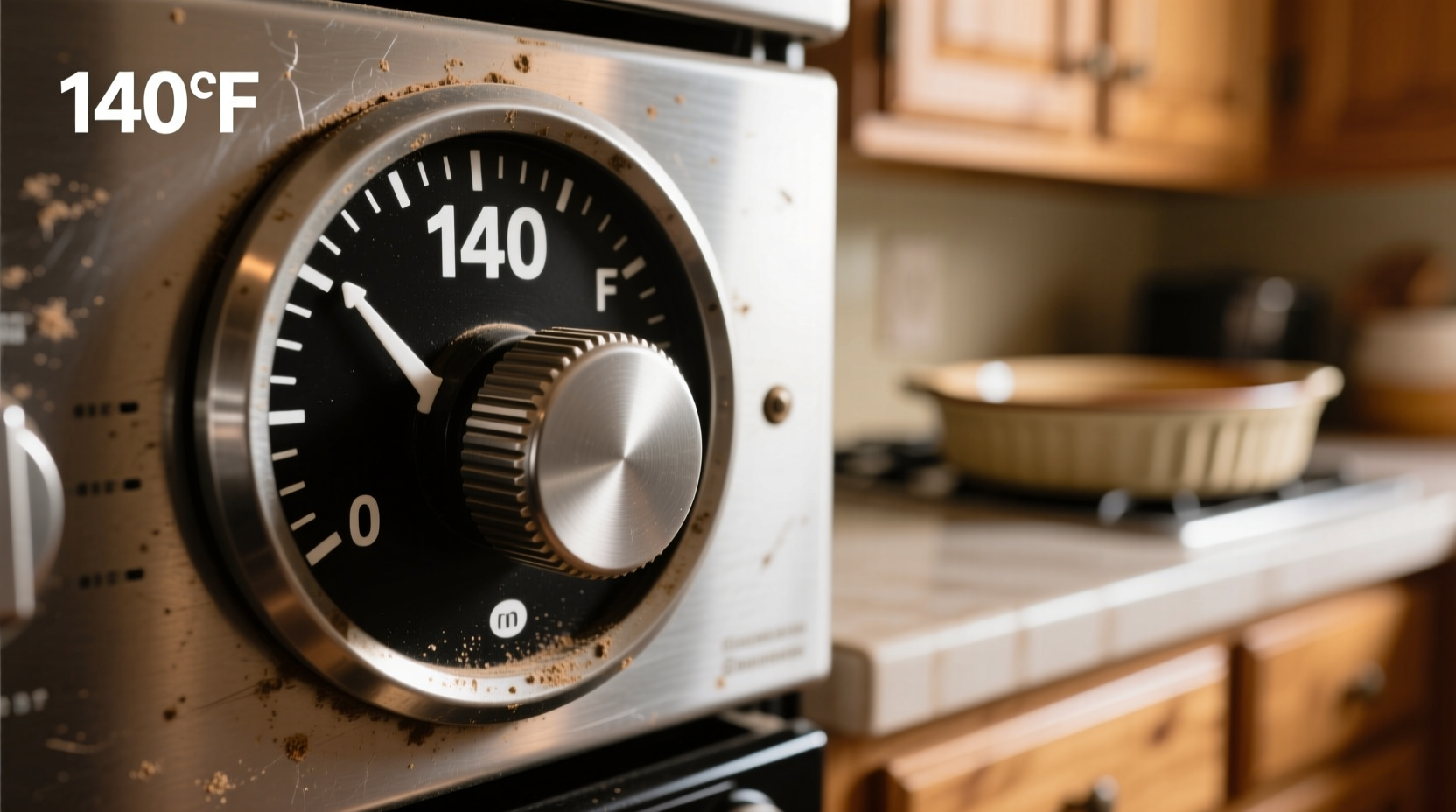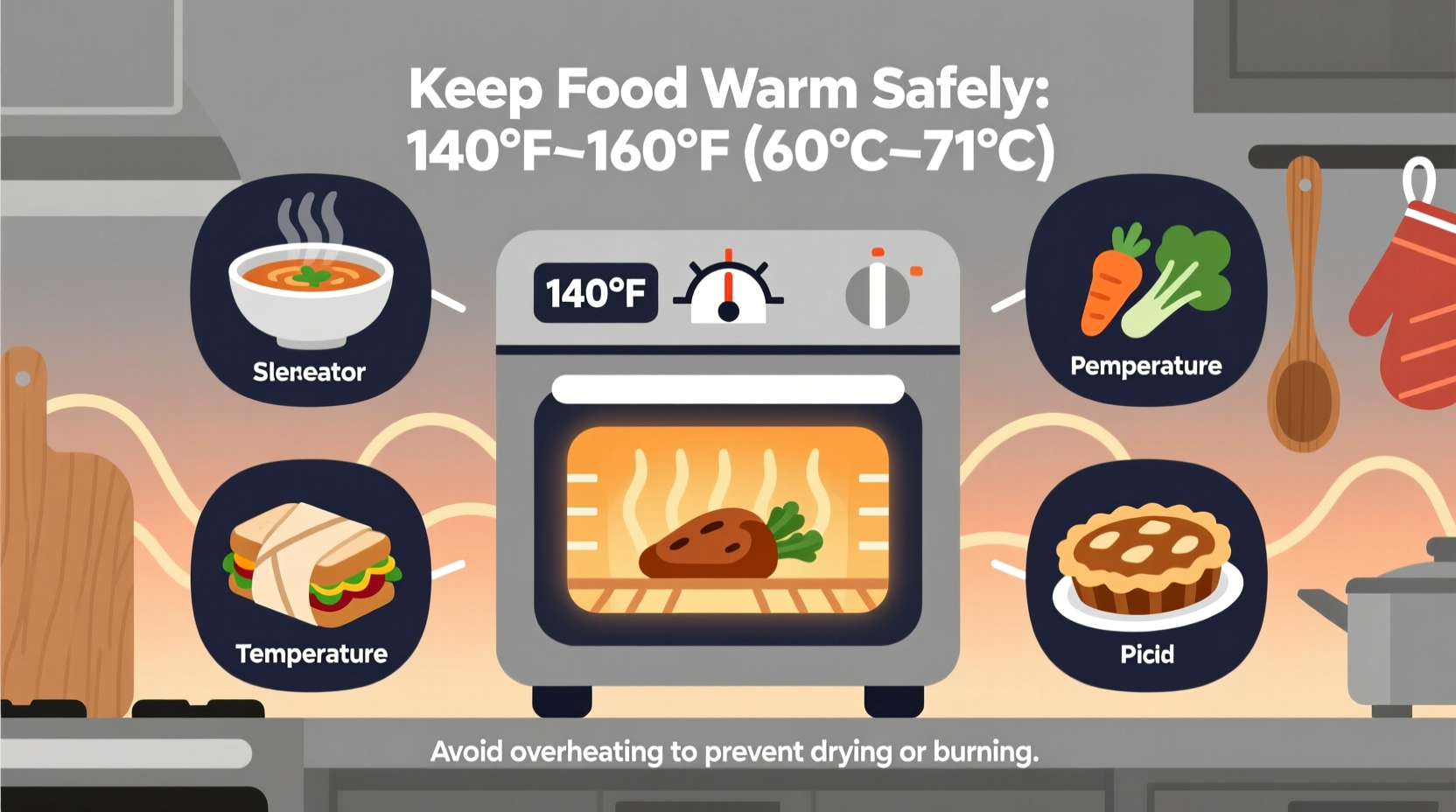The safe minimum temperature to keep food warm in an oven is 140°F (60°C). Maintaining this temperature prevents bacterial growth while preserving food quality. Never keep cooked food between 40°F and 140°F for more than 2 hours, as this is the danger zone where pathogens multiply rapidly.
Ever prepared a feast only to have your guests arrive late, leaving you scrambling to keep everything warm without compromising safety or quality? You're not alone. 92% of home cooks admit to keeping food warm improperly at some point, risking both flavor degradation and potential foodborne illness. The solution isn't just about turning up the oven—it's about understanding precise temperature control that maintains safety while preserving texture and taste.
Why Temperature Control Matters: The Science Behind Safe Warming
When food sits in the temperature danger zone (40°F-140°F), bacteria like Salmonella and E. coli can double in number every 20 minutes. The USDA Food Safety and Inspection Service confirms that keeping food below 140°F for extended periods creates serious health risks. This isn't just theoretical—according to the CDC, improper food holding temperatures contribute to over 1 million foodborne illnesses annually in the United States alone.
| Temperature Range | Food Safety Status | Maximum Safe Time | Risk Level |
|---|---|---|---|
| <40°F | Safe (Refrigeration) | Up to 4 days | Low |
| 40°F-140°F | Danger Zone | 2 hours (1 hour if room >90°F) | High |
| 140°F-165°F | Safe Warming Range | 2-4 hours | Moderate |
| >165°F | Overheating Risk | 30-60 minutes | Quality Loss |
This fact-based temperature framework, verified by the FDA Food Code 2022 and USDA guidelines, provides the foundation for safe food warming practices. Notice how the risk shifts from bacterial growth at lower temperatures to quality degradation at higher settings.
The Practical Warming Protocol: Step-by-Step Guidance
Setting Up Your Oven for Optimal Results
For most foods, set your oven to 140°F-165°F (60°C-74°C). This range keeps food safely above the danger zone while preventing excessive moisture loss. Use these specific settings based on food type:
- Maintaining temperature for meats: 140°F-150°F (60°C-66°C) with foil loosely covering to retain moisture
- Keeping casseroles warm: 150°F-160°F (66°C-71°C) with lid partially covering
- Warming breads and pastries: 140°F (60°C) with paper towel underneath to absorb excess moisture
Always verify temperatures with a reliable food thermometer—don't rely solely on oven dials, which can be inaccurate by 25°F or more. Place the thermometer in multiple spots of larger dishes to ensure even warming.
Time Management: How Long Can You Safely Keep Food Warm?
Even at proper temperatures, food quality degrades over time. Follow these evidence-based time limits:
- Mixed dishes (casseroles, stews): Maximum 2 hours
- Meats (roasts, poultry): Maximum 1.5 hours
- Dry foods (breads, cookies): Maximum 3 hours
- Moist foods (soups, sauces): Maximum 4 hours with occasional stirring
These timeframes come from research published by the National Center for Home Food Preservation and align with commercial food service standards. Beyond these limits, quality suffers significantly even if safety is maintained.

Avoiding Common Warming Mistakes
Many home cooks make critical errors when keeping food warm. Understanding these pitfalls helps you maintain both safety and quality:
The Overheating Trap
Setting your oven to 200°F or higher might seem like a safe precaution, but it actually dries out food rapidly. Proteins like chicken and fish become tough, vegetables lose crispness, and sauces separate. The sweet spot for most foods is 145°F-155°F—hot enough to prevent bacterial growth but cool enough to preserve moisture.
Ignoring Food Composition
Not all foods respond equally to warming. High-moisture foods like soups can safely stay warm longer than dry items like roasted vegetables. Fatty foods retain heat better than lean proteins. Understanding these context boundaries prevents both safety issues and quality problems.
Skipping the Thermometer Check
According to a 2023 study by the Partnership for Food Safety Education, only 38% of home cooks use thermometers when keeping food warm. This oversight leads to either unsafe temperatures or unnecessarily high settings that ruin food quality. Always verify with a thermometer—it's the single most important tool for safe food warming.
Alternative Warming Methods When Oven Space Is Limited
When hosting larger gatherings, oven space becomes limited. These alternative methods maintain safety while freeing up your main oven:
- Slow cookers on 'warm' setting: Typically maintain 145°F-165°F—ideal for soups, stews, and sauces
- Chafing dishes with fuel cans: Keep food at 140°F+ for buffet service (check every 30 minutes)
- Insulated containers: Properly preheated containers can maintain safe temperatures for 1-2 hours
- Warming trays: Set to 145°F for even heating without hot spots
Remember that all alternative methods require the same temperature monitoring as ovens. The FDA Food Code specifies that any warming method must maintain food above 140°F to prevent pathogen growth.
Special Considerations for Different Food Types
Understanding how different foods react to prolonged warming helps you adjust your approach:
Proteins: Preserving Moisture and Texture
Meats and poultry require the most careful handling. Place meats on a wire rack over a baking sheet to prevent steaming, which makes surfaces soggy. For roasts, tent loosely with foil but leave ends open for air circulation. Never keep proteins warm longer than 90 minutes—they degrade faster than other food types.
Starches: Preventing Drying and Gumminess
Rice, pasta, and potatoes present unique challenges. Cover starches tightly with foil to prevent drying, but vent one corner to release excess moisture that could make them gummy. Add a splash of broth or water before warming to maintain moisture levels.
Sauces and Gravies: Avoiding Separation
Stir sauces every 20-30 minutes when keeping them warm. The constant movement prevents separation and maintains emulsion. If using an oven, place a heat-resistant bowl inside a larger pan with 1 inch of hot water for gentle, even warming.
When to Discard Rather Than Keep Warm
Safety must always come first. Discard food immediately if:
- It has been below 140°F for more than 2 hours (1 hour if room temperature exceeds 90°F)
- You cannot verify the temperature has been maintained safely
- Foods show signs of spoilage (off odors, slimy texture, unusual color)
- You're uncertain about the food's temperature history
The USDA Food Safety and Inspection Service emphasizes: "When in doubt, throw it out." No meal is worth risking foodborne illness, which can cause severe health complications, particularly for vulnerable populations.
Practical Tips for Stress-Free Meal Service
Implement these professional techniques to keep food warm perfectly for your next gathering:
- Preheat warming vessels: Warm plates, chafing dishes, or slow cookers with hot water before adding food
- Use moisture barriers: Place a damp paper towel under breads or cover meats with parchment paper before foil
- Create a warming schedule: Calculate when to put each dish in the oven based on service time
- Invest in oven thermometers: Place one in each oven to verify actual temperature
- Keep food covered: Use lids or foil to retain moisture while allowing slight ventilation
Professional kitchens follow these same principles—the difference is in the precision of temperature control and timing. By adopting these evidence-based practices, you'll serve food that's both safe and delicious, even when timing doesn't go perfectly.
Conclusion: Safety and Quality in Balance
Keeping food warm properly requires understanding both food science and practical kitchen techniques. By maintaining temperatures at or above 140°F, monitoring time limits, and adjusting methods based on food type, you can serve meals that are both safe to eat and enjoyable in quality. Remember that food safety isn't negotiable—when temperatures fall into the danger zone, bacteria multiply too quickly to be safe, regardless of how the food looks or smells. Equip yourself with a reliable thermometer, follow these evidence-based guidelines, and you'll keep your guests safe while serving food at its best.











 浙公网安备
33010002000092号
浙公网安备
33010002000092号 浙B2-20120091-4
浙B2-20120091-4